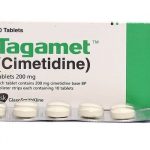
Contents
- 1 Intertrigo
- 1.0.1 Is diaper rash associated with neglectful care?
- 1.0.2 What causes diaper rash?
- 1.0.3 What are the symptoms of diaper rash?
- 1.0.4 How do doctors diagnose the cause of diaper rash?
- 1.0.5 What treatments are recommended for diaper rash?
- 1.0.6 Are there home remedies for diaper rash?
- 1.0.7 What is the prognosis for diaper rash?
- 1.0.8 Can diaper rash be prevented?
Intertrigo
Diaper rash is a general term for skin irritation in the diaper-covered region, regardless of the cause. Synonyms include:
- Diaper dermatitis (inflammation of the skin)
- Napkin (or "nappy") dermatitis
- Ammonia dermatitis
Contact irritation is the most common cause of diaper rash. While diaper rash is commonly associated with infants and toddlers, anyone wearing a diaper (such as an incontinent adult) can develop this dermatitis.
Is diaper rash associated with neglectful care?
No. The rash does not indicate poor caretaking skills. The causes of this type of skin irritation are still debated in dermatology, but neglectful parenting is not a factor.
In the United States, diaper dermatitis accounts for 10%-20% of all skin disorders treated by general pediatricians. Although the rash can appear as early as the first week of life, it most commonly occurs between 9-12 months of age. Studies show that between 7%-35% of children in this age range experience diaper rash at any given time.
What causes diaper rash?
Contact Dermatitis
The primary cause of diaper rash is contact dermatitis, which results from skin irritation. The severity can range from mild redness to erosion of the skin’s top layers. Contact diaper dermatitis mainly affects the areas in contact with urine and stool, sparing skin folds.
Skin Infections
Skin infections are a common cause of diaper rash. Bacterial infections (staph and strep) and yeast/fungal infections (Candida) are often responsible. These infections occur when the skin’s natural defense mechanisms are overwhelmed due to skin integrity disruption in the diaper region. Staph and strep infections are known as impetigo and present with small blisters and pustules that rupture, leaving erosions in the irritated skin. Candida diaper dermatitis appears as bright red zones with satellite lesions at the borders of the irritated skin. Unlike contact dermatitis, Candida is typically found in skin folds and around the anal region. Visual inspection can usually diagnose infectious diaper dermatitis, but laboratory tests may be necessary for confirmation.
Allergic Reactions
Allergic reactions are a less common cause of diaper rash. Fragrances and components of diapers and wipes are common allergens. Allergic rashes have well-defined red zones with vesicles and erosions on the surface. Patch testing can identify the allergen but is rarely required.
Other Causes
In addition to common causes, there are a few uncommon causes of diaper rash. Unusual infections, metabolic and nutritional deficiencies, immunodeficiency, and malignancies can all contribute. Unfortunately, diaper rash can also be a sign of child abuse, such as hot-water immersion or extreme neglect of infant hygiene.
What are the symptoms of diaper rash?
Diaper rash presents as a change in the skin within a child’s diaper. The affected skin is typically red and may have superficial erosion. Small blisters or pustules may also be present. Diaper changes may be mildly uncomfortable for the child if the irritated skin is sensitive.
How do doctors diagnose the cause of diaper rash?
Most diaper rashes result from skin irritation due to urine and stool. These rashes are referred to as contact skin irritant rashes. Two types of infections, bacterial and yeast, can occur independently or as a complication of contact diaper rash. Bacterial infections, caused by staph and strep, present with pustules or tiny blisters. A Candida yeast infection can develop in the diaper region and around the anal area.
What treatments are recommended for diaper rash?
The best treatment for diaper rash is to avoid the factors that cause contact irritation and secondary infections. Frequent diaper changes minimize exposure to stool and urine and are essential for preventing and managing diaper dermatitis.
If a rash develops, cleansing with water and soft cloths is less irritating than disposable wipes. Applying a diaper ointment that contains petroleum jelly (Vaseline) or zinc oxide (Desitin) creates a barrier against skin irritants and reduces friction on irritated skin. For cases where rubbing during hygiene exacerbates the diaper rash, using a non-sticky cream or ointment like Vaseline can be helpful. Mineral oil can be used to facilitate the removal of sticky stool during hygiene. Most pediatricians do not recommend using cornstarch or talcum powder due to their limited effectiveness and potential risk of aspiration. Baking soda or boric-acid baths with high concentrations should be avoided as they can be toxic through increased absorption in areas of skin breakdown.
Exposing the irritated skin to open air, weather permitting, is highly effective in clearing up diaper rash. Warm-water baths for 15-20 minutes, twice daily, often have a therapeutic response. The benefits of adding additional agents, such as baking soda, to bath water are debatable.
If these measures do not provide significant improvement within two to three days, it may indicate a secondary bacterial or yeast infection. The diaper region should be examined by a pediatrician unless the parent is confident in making these diagnoses. Topical antibiotic ointments are available for therapy in these situations.
Are there home remedies for diaper rash?
Home remedies for diaper rash include:
- Air exposure (no diapers for short periods)
- Extra bathing (10-15 minutes in warm water)
- Application of topical barriers to the diaper region
Petroleum jelly (Vaseline) and zinc oxide (Desitin) are often helpful, while powders, high concentrations of baking soda, and boric acid baths are not recommended.
Common Questions About Treating Diaper Rash Naturally
Does using cloth diapers prevent diaper rash?
Switching from disposable to cloth diapers does not reduce the likelihood of contact-type diaper rash. Disposable diapers with absorbent gel material draw moisture away from the skin, promoting a healthier diaper area.
How should an allergic rash be treated?
Water cleansing of the skin and switching to another brand of disposable diapers or cloth diapers can usually resolve an allergic rash.
Is cortisone cream effective?
Minimally concentrated hydrocortisone cream may be recommended in certain cases, but excessive use and the application of higher potency hydrocortisone preparations can cause side effects. These creams should only be used under the guidance of a pediatrician or physician familiar with their application to infants.
Is Neosporin beneficial?
Neosporin and other topical antibiotics containing neomycin should be avoided as neomycin is a common allergen that can aggravate the skin. These medications may complicate and confuse the situation instead of helping.
What is the prognosis for diaper rash?
The prognosis for diaper rashes is excellent. The routine therapies mentioned above should provide a rapid and effective response. If improvement is not seen, a pediatric evaluation should be sought to rule out unusual conditions associated with diaper rash. Unfortunately, diaper rashes may recur.
Can diaper rash be prevented?
Several approaches can help prevent diaper rash, including timely diaper changes, trying different diaper brands to address sensitivity, air exposure, and extra bathing. Parents should understand that diaper rash is not a reflection of their parenting skills but rather one of the challenges of parenthood.
Janniger, Camila K., Schwartz, Robert A., Szepietowski, Jacek C., and Reich, Adam. "Intertrigo and Common Secondary Skin Infections." American Family Physician 72.5 Sept. 1, 2005: 833-838.
Kalra, Monica G., Kim E. Higgins, and Bruce S. Kinney. "Intertrigo and Secondary Skin Infections." American Family Physician 89.7 Apr. 1, 2014: 569-573.
Kalra, Monica G., Kim E. Higgins, and Bruce S. Kinney. "Intertrigo and Secondary Skin Infections." American Family Physician 89.7 Apr. 1, 2014: 569-573.


